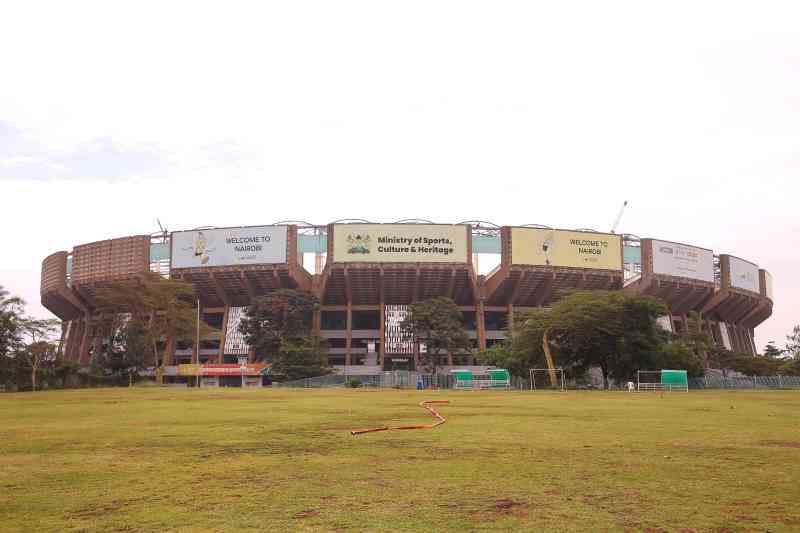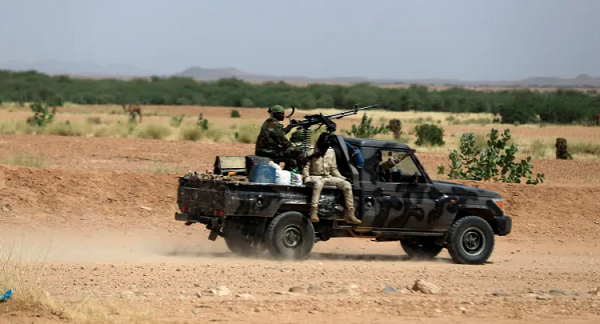ACLED Regional Overview Latin America and the Caribbean: April 2025 - Argentina | ReliefWeb
On 12 March, police intervened in a protest in Buenos Aires over pensions using tear gas, water cannons, and pellets. This sparked violent clashes that resulted in more than a hundred demonstrators being arrested and dozens injured. Retirees had gathered near the National Congress to demand an increase in pensions and repudiate the end of a social program that granted free access to medicines for retirees, among other measures.1 These protests had been occurring on a weekly basis since President Javier Milei took office due to his austerity policies.2 This time, however, soccer fans and other labor unions joined the demonstrations, prompting police intervention. Minister of Security Patricia Bullrich accused demonstrators of being “hooligans” and “left-wing groups that tried to destabilize the government” and ordered the intervention of the protest under protocols usually used to contain soccer-related riots.3
The government’s repression of the demonstration and stigmatization of demonstrators fueled further mobilization throughout the second half of the month. In March, ACLED records at least 40 protests against pension cuts and subsequent government response, the highest number since ACLED began covering the country in 2018. Half of these took place after the 12 March demonstrations. Furthermore, the General Confederation of Workers, one of the country’s largest unions, has already called for a 24-hour national strike in April. They did so in a statement in which they also called the government out for its management of the protest.4 Since the beginning of Milei’s government, ACLED records over 2,000 protests in Argentina, defying a security protocol introduced to ease restrictions on police interventions to disperse protests. Security forces have intervened in at least 60 demonstrations since then, but the intervention on 12 March is the most violent so far.
In March, the Revolutionary Armed Forces of Colombia (FARC) dissidents 33rd front launched a counter-offensive against the National Liberation Army (ELN) in the Catatumbo region of Norte de Santander department5 in an attempt to regain territories overtaken by the ELN in its January offensive. ACLED records 35 events of armed group violence in the department during March, the highest since March 2022. Tensions also mounted in neighboring Arauca, where the ELN is fighting against the FARC dissident 10th front that is affiliated with the General Central Staff. In both departments, armed groups targeted civilians accused of collaborating with the rival group. Overall civilian targeting events almost doubled in March, compared to the month prior. Meanwhile, the number of people who have been displaced in the Catatumbo region since the war between the ELN and FARC dissidents broke out in mid-January has already surpassed 56,000.6
In parallel, the ELN stepped up its confrontation with security forces in both the Norte de Santander and neighboring Arauca departments, where it was involved in at least 20 events, the highest number since January 2018. In a new development, it even started using drones to attack military forces. The ELN probably seized these drones in abandoned FARC dissident camps.7 Albeit not a new practice, the use of drones charged with explosives skyrocketed in 2024. ACLED records around 40 events, mostly resulting in clashes between FARC dissidents and security forces. In the first quarter of 2025, armed groups are increasingly using drones in isolated attacks against their enemies without engaging in armed clashes.
In March, police forces deployed drones during security operations in Port-au-Prince to strike strongholds of the Viv Ansanm gang alliance. This is the first time ACLED records the deployment of attack drones by police forces since ACLED started covering the country in 2018. On 1 and 2 March, a new task force that was created by the Transitional Presidential Council (TPC) at the end of February8 carried out drone strikes in Delmas and Port-au-Prince communes, targeting neighborhoods controlled by gang leader Jimmy Chérizier and the 5 Segond gang. The strikes resulted in the death of at least five people. Unverified reports claimed that senior gang members were among the casualties and that Chérizier himself had been injured — allegations Chérizier later denied while issuing threats of retaliation.9
Throughout the month, ACLED records at least 17 operations in which security forces deployed drones charged with explosives, resulting in around 50 reported fatalities. Their use contributed to a 26% increase in the number of reported fatalities in anti-gang operations compared to February.
On 9 March, the ruling Liberty and Refoundation (LIBRE) party and two main opposition parties, the National Party of Honduras (PNH) and the Liberal Party, carried out primaries for mayoral, congressional, and presidential candidates for the upcoming general elections on 30 November. The votes were marred by claims of electoral irregularities and state interference. On voting day, people demonstrated in the capital Tegucigalpa, denouncing irregularities in the process after delays in the delivery of the electoral materials in some poll stations in Tegucigalpa and San Pedro Sula.10 Representatives of the opposition parties accused the military forces in charge of supervising the transport of the material of orchestrating the delays to suppress voter turnout in areas less supportive of the LIBRE party’s presidential candidate, Rixi Moncada, who is also the current minister of defense.11 Cossette López, the head of the National Electoral Council affiliated with the PNH, accused military chiefs of altering the reports that documented the process to absolve the military forces of any responsibility for the claimed irregularities.12 Army Chief of Staff Roosevelt Hernández rejected López’s accusations, arguing that the opposition sought to discredit the role of the armed forces.13
The claims come amid ongoing violence targeting candidates during the election campaign. On 5 March, armed men shot and injured a mayoral candidate for the LIBRE party in Juticalpa, Olancho. This marks the 11th attack on political figures since the start of the electoral process on 8 September 2024.
On 5 March, a federal judge released a local Jalisco New Generation Cartel (CJNG) leader, Jesús Aguirre, known as “El Chuy.” This prompted the CJNG to escalate actions in Michoacán and Jalisco. Aguirre had been arrested in a joint operation between the attorney general’s office and security forces on 25 February on drug trafficking and other charges, but the judge argued that authorities did not present sufficient evidence to try him.14 Upon his release, Aguirre ordered retaliatory violence against security forces in the western part of Michoacán state.15 Clashes between the CJNG and security forces have occurred in at least 10 distinct municipalities of Jalisco and Michoacán states since his release, resulting in 13 reported deaths, including that of six National Guard and military officers. The cartel also blocked roads in five municipalities in Michoacán near the border with Guanajuato and Jalisco states, a tactic often used by cartels to hinder security forces’ operations and to display power.
State authorities criticized the judicial decision, claiming that it put civilians at risk as Aguirre is known for leading violent actions in Michoacán and controls strategic trafficking routes that connect Michoacán with Jalisco and Guanajuato states.16 Violent actions and roadblocks by the CJNG in Michoacán had been increasing since Aguirre’s arrest on 25 February. In March, the CJNG was involved in 21 events of violence and roadblocks in Michoacán and Jalisco, double the number in February.
Government faces backlash over its handling of security after a famous singer is killed
On 16 March, gunmen killed the lead singer of the famous band Armonía, Paul Flores, in what appeared to be an extortion-related attack in Lima.17 The event prompted the government to declare a state of emergency in the metropolitan area of Lima and its neighboring province of Callao.18 Authorities later arrested four suspects in connection with the killing.19 The murder prompted a public outcry: On 21 March, labor sectors took to the streets to protest against rising levels of criminality and extortion and to demand President Dina Boluarte’s government take effective measures to address the problem.20 In response, on the same day, congress dismissed Minister of Interior Juan José Santiváñez for his inability to rein in criminal violence.21 Yet, thousands of Peruvians who are unsatisfied with the government’s measures marched for the same reasons in Lima on 28 March, and unions have announced a general strike to take place by the end of April.22
This is not the first time Boluarte’s government has faced unrest over Peru’s deteriorating security situation. In 2024, ACLED records around 200 security-related demonstrations, the highest number since it began covering the country in 2018. The government has attempted to combat crime by issuing short-term states of emergency. However, they have proven to be ineffective in curbing violence and crime. Last year, the country saw a 35% increase in the homicide rate,23 which increased by a further 12% in the first quarter of 2025 compared to the same period last year, according to data from the National Death Information System.24










